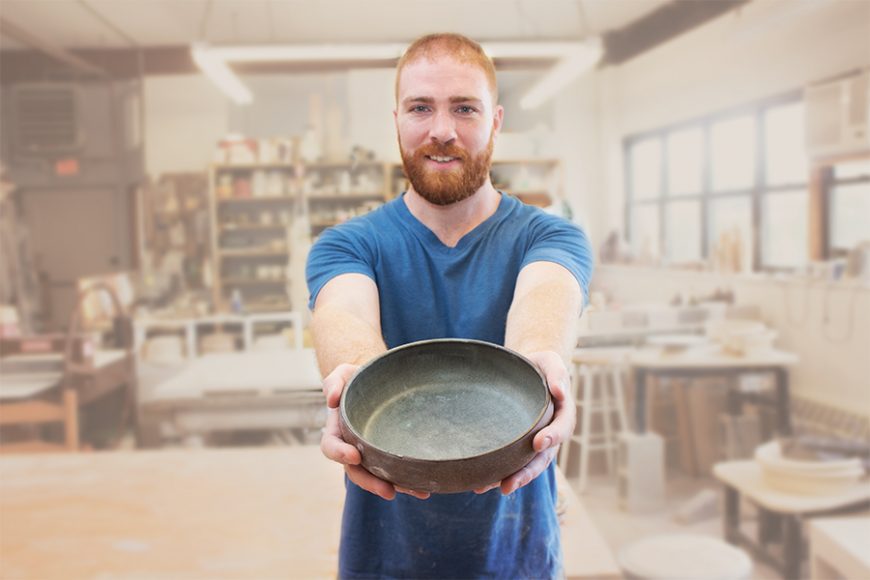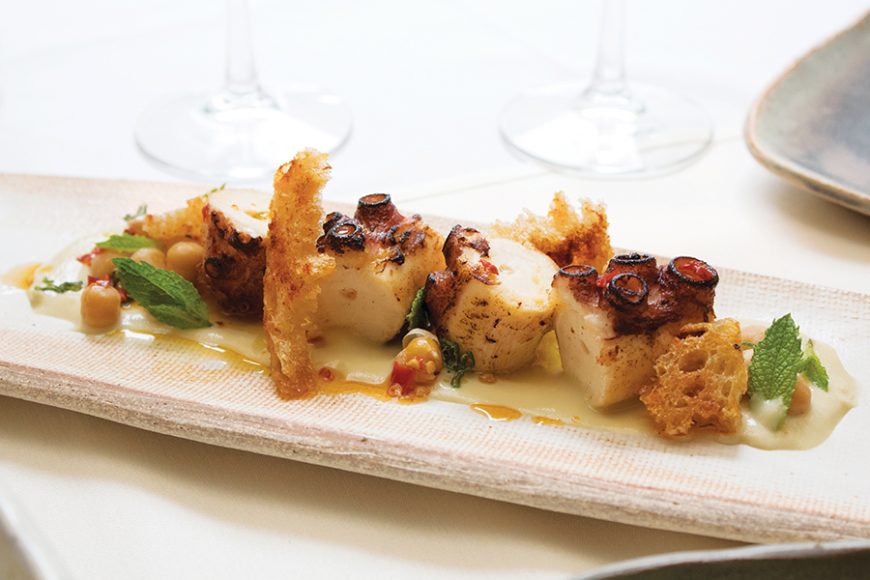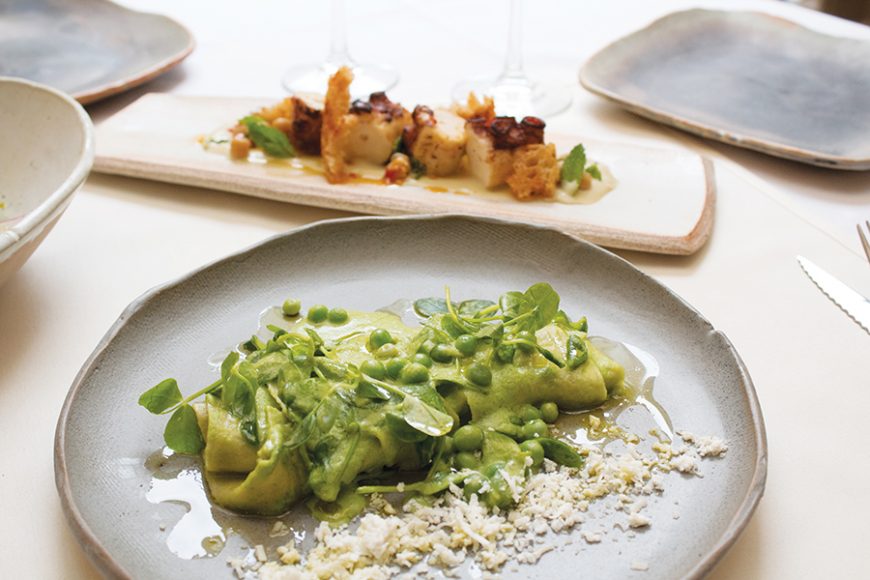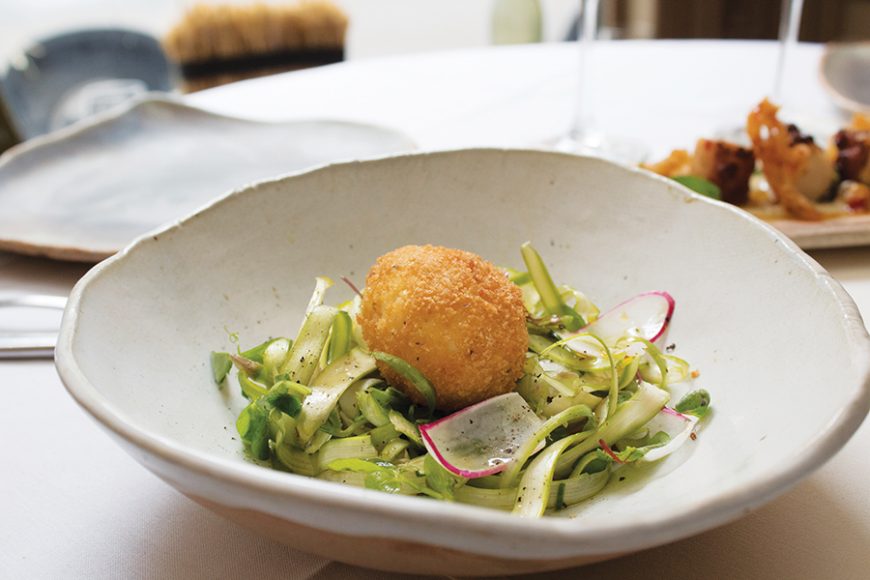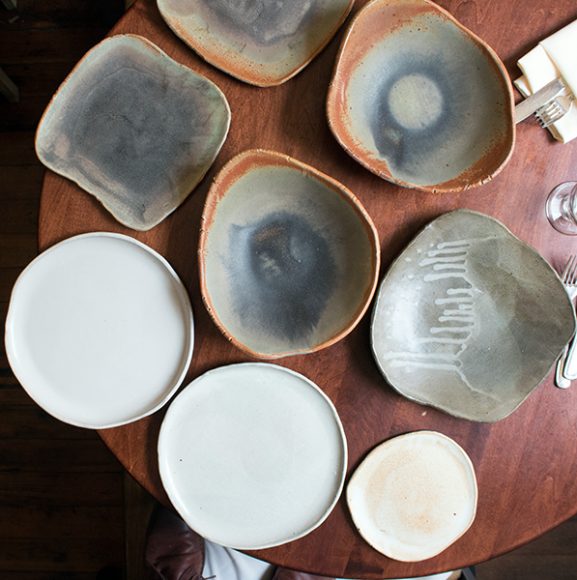Written by Emma McCormick
As we follow Connor McGinn through the labyrinth of studios and firing rooms at the Clay Art Center in Port Chester, it is hard to imagine him anywhere else.
With his styled red beard, distressed jeans and plain black T, McGinn exudes artiste.
His Instagram feed and overflowing studio speak to a fertile mind. The rustic-yet-sleek plates that are his work bridge food and table. If plates could have feng shui, his would be models of perfect harmony. Among them, you assume that McGinn has worked with clay his entire life. But creating custom dinnerware for farm-to-table restaurants was never his plan.
Indeed, McGinn’s original plan was to work in finance and business. However, after graduating from the George L. Argyros School of Business and Economics at Chapman University in Orange, California, he could not fathom working behind a desk 9 to 5. Two years of work with the Peace Corps in West Africa, his time away from the hustle and bustle of American life, led him to acknowledge his passion for food. Back in New York, he took himself off to the kitchen of Restaurant North in Armonk.
“I walked in and said, ‘I know nothing (about food). I want to learn’… They gave me a chance,” says McGinn, who learns by creating.
Three years later, he found his calling in ceramics as the owners of Restaurant North sought to display their culinary creations on unique, homemade dinnerware. Seeing the expensive yet uninteresting plates they were prepared to buy, McGinn declared, “I can make you something better.”
Despite his limited experience in ceramics, McGinn set out to create his first line of dinnerware. Now he has made full sets for more than 10 restaurants in New York and Connecticut, including Blue Hill at Stone Barns in Pocantico Hills, The Twisted Oak in Tarrytown and soon, at Taproot, opening in Bethel. He is making individual sets for private homes as well.
McGinn tweaks his designs to fit a restaurant’s or individual’s aesthetic. The designs fall into two categories, either rustic edges or clean edges, but no two sets look alike. That’s in part due to the matte and gloss glazes he experiments with, often going through up to six trials before landing on the right colors and textures.
Even after this laborious process, variation in tone is inevitable. But then, in the art of ceramics, nothing is deemed a constant as even a change in the weather can alter the appearance of a glaze. While this aspect of clay can be agitating, it draws clients even more to McGinn’s work, as each piece possesses a unique character.
“When you sit down at a table of four and you get four of the same dish but each plate is slightly different, people notice that right away,” he says, nodding toward the table in his studio as if he can precisely picture four distinct plates in front of us. “It adds to the value. It adds to their experience.”
As requests from high-profile clientele pour in, McGinn stays humble. While he may be confident calling ceramics his full-time job now, he admits that six months ago he would not have been able to do the same. The fear of “crashing and burning” plagues any artist. One day he will be on a high after working with Blue Hill and a handful of other restaurants. Yet when he opens the kiln to see that half of his works are complete junk, he is grounded once again like the dirt and sand that comprise his clay. Yet he remains ambitious.
“If I didn’t keep an open mind to opportunity in the first place, I wouldn’t be here,” he says. Despite his go-with-the-flow attitude, he looks toward to opening his own space. He says it must be a place with plenty of “foot traffic” and an “open floor plan” in order to create a relationship among buyer, art and artist. He imagines his kiln and wheel would sit directly behind the display of his work.
“People aren’t just paying for the object. They are paying for the story behind it.”
For more, visit connormcginnstudios.com.

